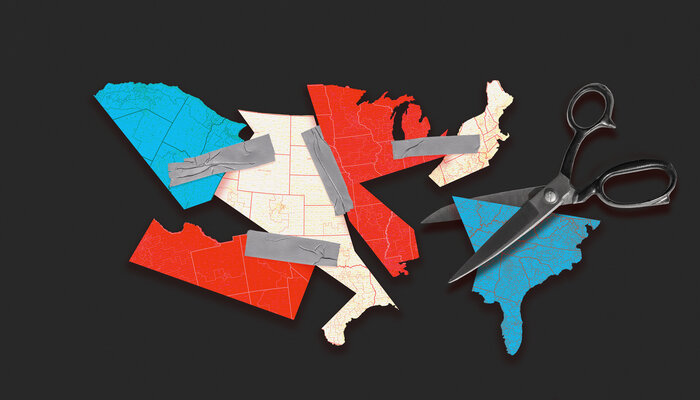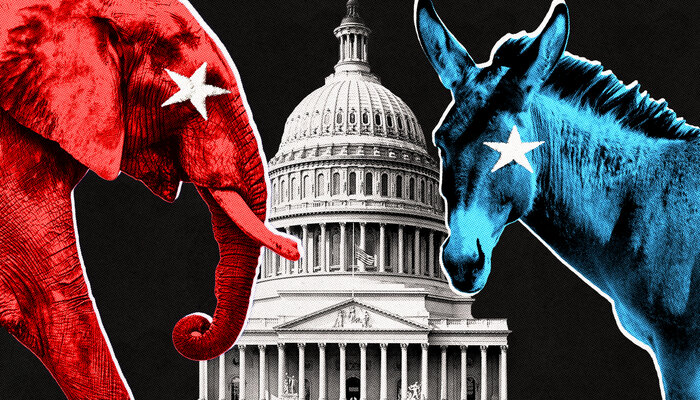Four takeaways on how voting maps made the difference in a tight fight for the House in 2024 >>
This November, Americans will vote in another close election for the House of Representatives. If polls are correct, either party could emerge with a slender majority. But, despite a competitive environment nationally, Republicans enter the final stretch of the campaign benefiting from an artificial head start due to state-level gerrymandering.
It didn’t have to be this way.
In 2022, Congress nearly passed the Freedom to Vote Act, a landmark package of democracy reforms that included a prohibition on partisan gerrymandering in the drawing of congressional districts. The transformative bill passed the House and had majority support in the Senate. It stalled only because the Senate failed by two votes to modify the chamber’s archaic filibuster rules to allow the bill to advance to an up-or-down floor vote.
Without the more level playing field provided by the Freedom to Vote Act, states draw congressional districts using wildly different rules. Some of this decade’s congressional maps are models of fairness; others are decidedly not. Both parties engaged in gerrymandering after the 2020 census, but, overall, the bias in this cycle’s maps strongly favors Republicans due primarily to aggressive gerrymandering in GOP strongholds in the South and Midwest. In total, the Brennan Center estimates that this gerrymandering will give Republicans an advantage of around 16 House seats in the 2024 race to control Congress compared to fair maps.
To be sure, the GOP gerrymandering advantage is not insurmountable. The growing number of equitable maps in other parts of the country, combined with a highly competitive electoral environment, give Democrats more than an even shot at regaining the majority they lost in a close election in 2022. Indeed, Democrats have multiple paths to a majority through the 19 GOP-held districts (mostly drawn by commissions, courts, or under divided control of government) that are currently rated by Cook Political Report as toss-up or lean Republican. But their paths are narrower than they would be if all states had fair maps that comply with the robust anti-gerrymandering standards in the Freedom to Vote Act.
It is no surprise that the effects of gerrymandering tilt in favor of the GOP. This decade, as last, Republicans disproportionately controlled the redistricting process, drawing 191 (or 44 percent) of the districts that will be used in this year’s elections. By contrast, Democrats fully controlled the drawing of only 75 districts. The rest were drawn by commissions, courts, or divided governments.
State courts also played a role in creating Republican advantages, because courts in states where Republicans drew maps (many of them with judges elected in partisan elections) have been much less inclined to police partisan gerrymandering than their counterparts in Democratic states. Thus, while large Democratic-favoring skews have been mostly corrected through legal review, Republican-favoring skews have almost uniformly remained uncorrected. Indeed, courts in many GOP states have followed federal courts’ lead in declaring gerrymandering claims to be political questions that courts have no authority to address.
Democrats also drew skewed maps in a few places, but the 7 extra Democratic or Democratic-leaning seats in those maps are less than a third of the 23 extra GOP or GOP-leaning seats in states with Republican-favoring maps.









